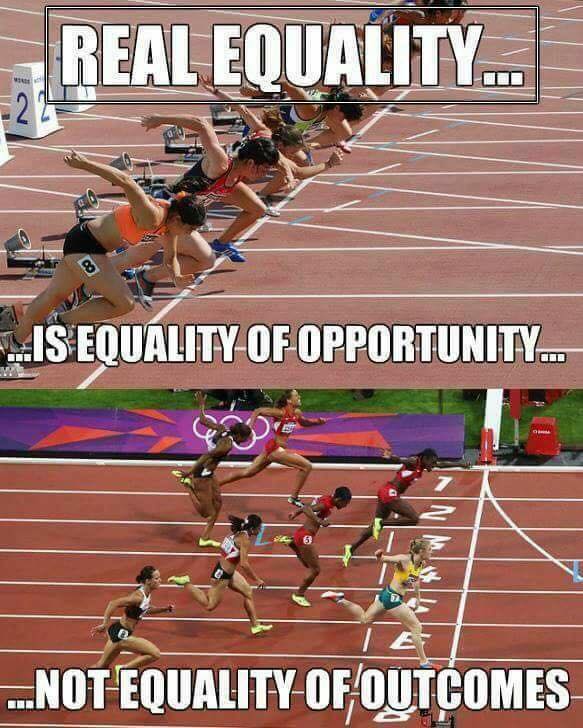This article should debunk once and for all, the faux arguments about income inequality in the capitalist system whether it is based on sex, race, or affiliation. However, the argument will likely continue in the face of facts for generations to come.
The trendy fashion among the leftist elites of our day is the idea of inequality. Inequality is used as an argument to attack capitalism as an inefficient way to distribute wealth. Mainstream Media (MSM) continuously run stories and articles about the “wealth gap” and how it is growing. This is another false narrative being used to promote class warfare and carve out voting blocks using identity politics. However, this idea can be quickly and easily debunked with facts and data. Inequality is a great rallying cry because it is a way to mislead the general public into believing that there are forces and boogeymen outside their control working to keep them down.
The next time someone tries to tell you about inequality in wage and social status, remind them of these simple and easily verifiable arguments. The US ranks 12th in overall GDP per capita but is first among the large industrialized countries. The countries ahead of the US on the richest per capita list are small, sparsely populated countries that have either over abundance of natural resources (such as oil) or have attractively low tax structures (Monaco #1, Lichtenstein #2, Luxemborg #3). The economic dominance of the US came about because of its ability to produce goods and services consumers want in an efficient manner. The US capitalist system leads in innovation, productivity and profitability which is what created this wealth among such a large population in such a large country.
Another easy proof that living under the US capitalist economic system is better than anywhere else in the world is to consider those who live in “poverty” (as measured by annual income), are significantly better off living in the US than in most parts of the world. You could be unemployed in the US with no income and yet live in relative comfort with government-funded housing, running water and electricity, plenty of food on the table for your family, and have access to job training for improvement of your economic situation. Ironically, the number one biggest health concern among those living in poverty in the US is obesity. Government bureaucrats at the federal and state levels are literally tripping over themselves to take credit for how much tax money they hand out to the poor. On a side note, there is a misleading tendency in the US to confuse homelessness with poverty. Those who are homeless in the US have a close to 100% correlation to mental health and/or drug-addiction issues. The image of homeless people on the street is not a story about poverty but is mostly to do with shutting down and emptying of all publicly funded mental asylums during the 1970s and with the rate of substance abuse.
We constantly hear about pay inequality between men and women. Claims that men make more than women for the same jobs is a false narrative when you look at the actual facts and data. While there is no doubt things like old boys networks and job discrimination do exist, the primary root causes of the “pay gap” is pretty simple to identify.
- A college education results in higher earned wages. Seems a pretty simple concept that even the most hard-left leaning activist cannot deny. Beyond simply having a degree, the type of academic degree makes a big difference in wages. Having a degree in French or Sociology does not guaranty you a job that pays well or even having one at all. Also, don’t forget that certain trades also may have six-figure annual earnings without a college degree and those jobs tend to be looked over in such studies.

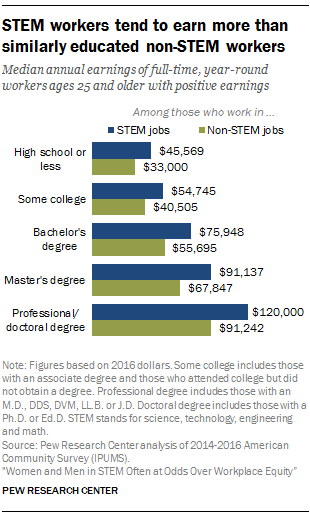
- Technology and engineering degrees earn more than all other fields. Degrees in Science, Technology, Engineering and Math (STEM) tend to be evenly distributed between men and women (around 50/50) according to PEW Research Center but more women go into healthcare related fields such as nursing (75%) than men. Men tend to concentrate in technology/computers (75%) and engineering (86%). Women represent under one-in-ten for sales engineers (7%) and mechanical engineers (8%) while they represent 96% of speech language pathologists and 95% of dental hygienists. Also note that the trades which can also make high wages are not included the PEW study and tend to be male-dominated (electricians, plumbers, mechanics, and construction).
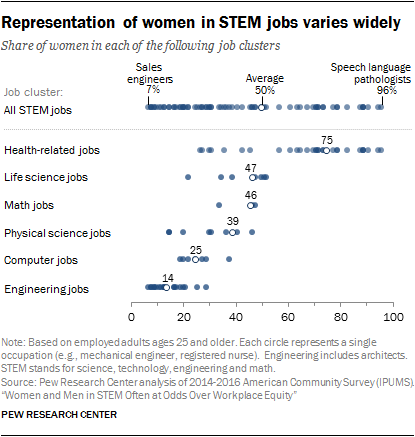
- Seniority is another big factor in wages. The longer time an employee stays with a company, the more money they will earn. Many women drop out of the workforce to raise a family and return at a later point. Upon their return to the workforce, they tend to re-enter at entry level wages due to their lack of seniority within the company. The chart below is from BLS which shows that while men have a slight lead in the 16 to 34 age groups, the general level and trajectory of the graphs is relatively the same until reaching the age 34 when many exit to raise families. Also keep in mind that this difference is primarily dependent upon industry demand for special areas where computers, technology, and engineering earn the most and has fewer women in those fields.
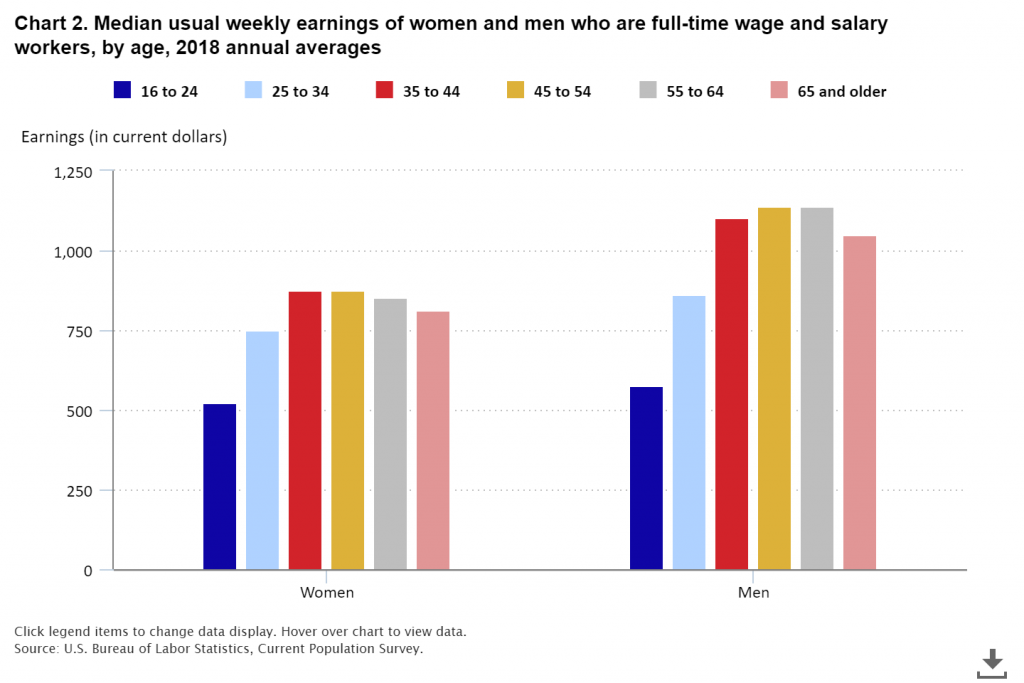
- Non-college educated women earn more than men. Studies by the US Bureau of Labor Statistics (BLS) show that women wage growth is actually higher than men when they don’t have a four year college degree. The reason men earn more with college degrees is noted in the previously mentioned analysis on the different types of concentrations in academic study that men and women pursue in college.
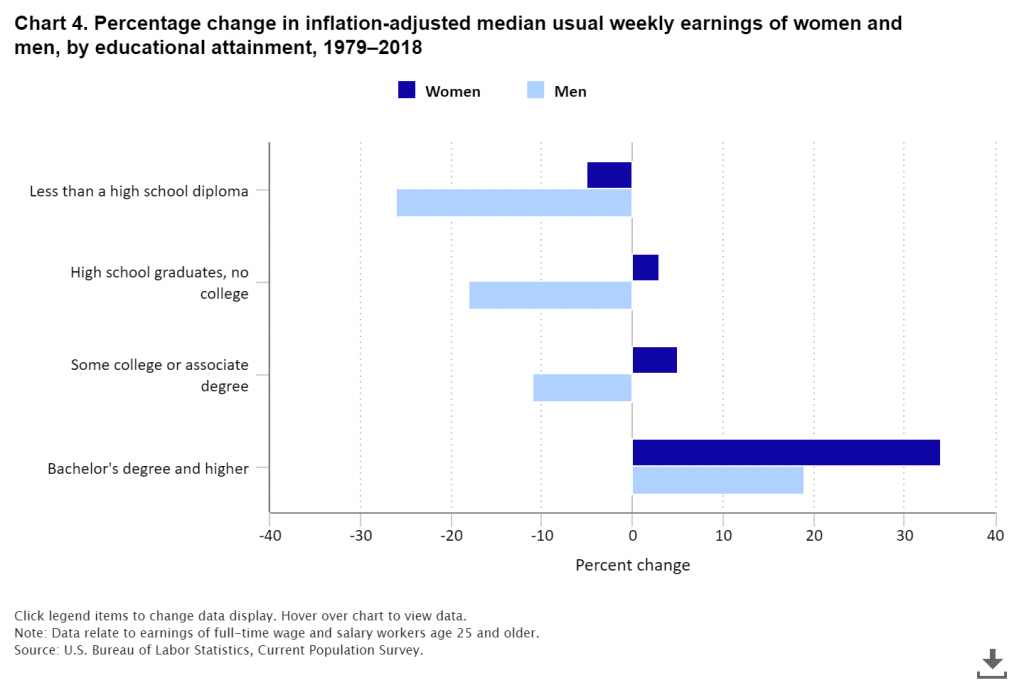
UK studies of STEM education also show women and men have similar wage growth depending on the types of studies and degree upon graduation. Interestingly there are more women in engineering than men in the UK.
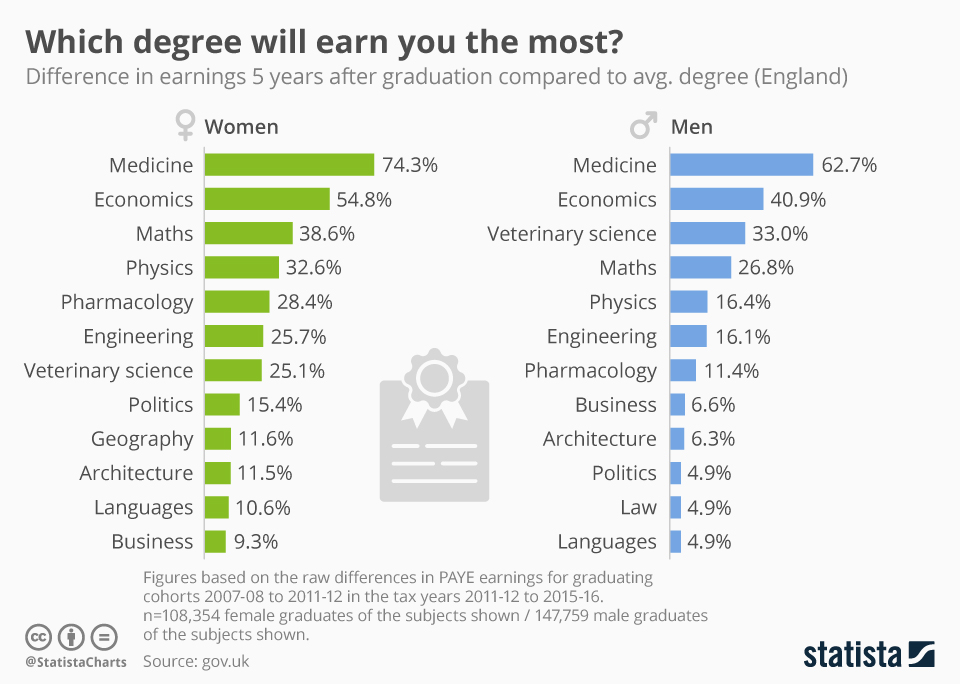
In summary, living in a capitalist country such as the US is the best place to be if you are poor and don’t have a job. Equality of opportunity is not the same as equality of outcomes. In the US, even the poorest person may become rich with hard work and planning (and just a little bit of luck). You don’t even have that opportunity in most countries.
- Compare the lifestyle of those living below poverty levels in the US with other countries around the world, it becomes self-evident as to which system is best on every level when comparing housing, food, healthcare (Medicaid) and opportunities.
- Homelessness in the US should not be compared with poverty since the root causes in homelessness is drugs use and mental health.
- Seniority is also not included in the pay gap discussion when it has a large influence on wages.
- Wages in the US are dependent upon industry demands and the type of education a person pursues and not the proverbial glass ceiling or discrimination (though it does occur).
- If the idea is to increase pay for women, then more women should be encouraged to enter into the fields of technology and engineering.
